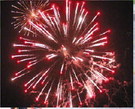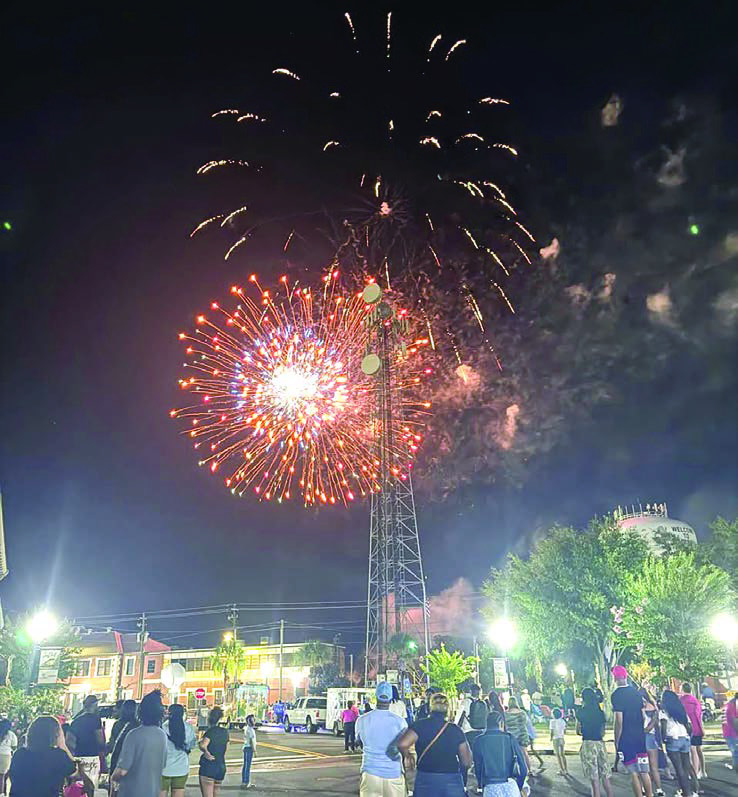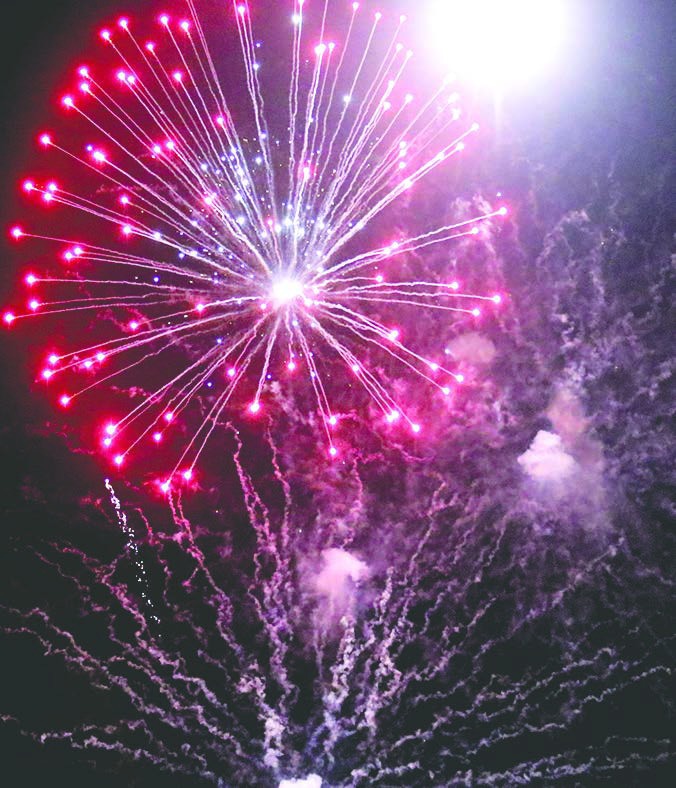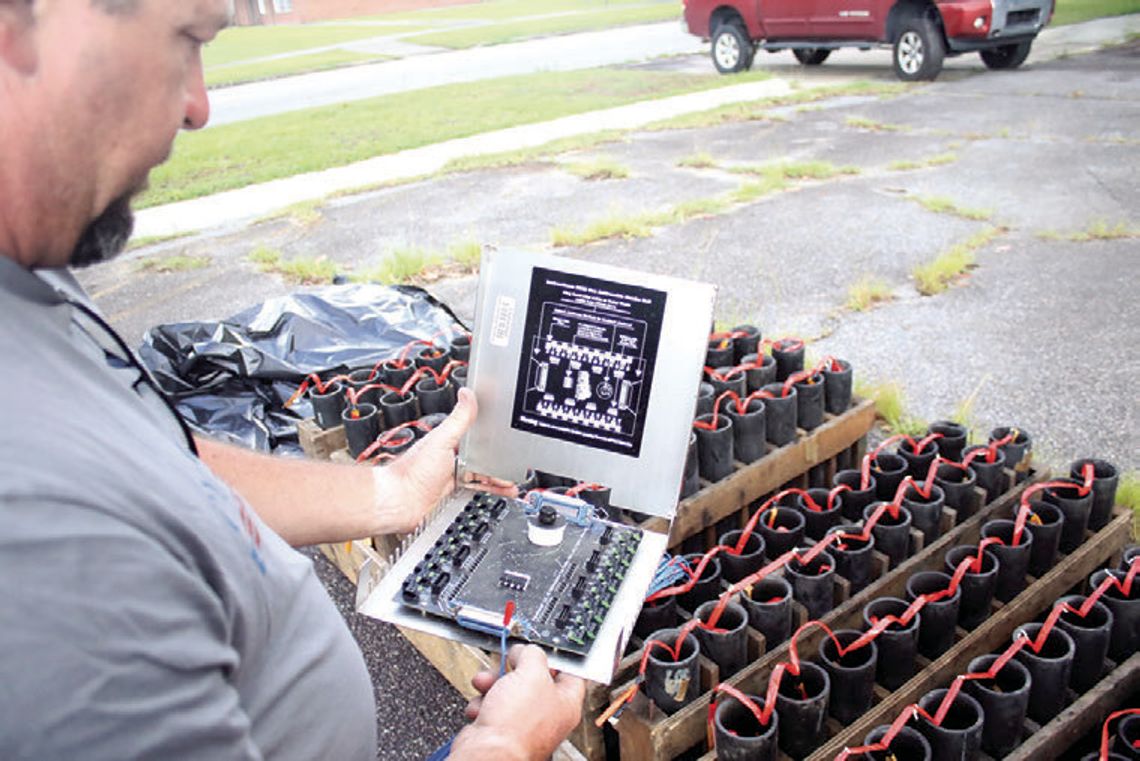EDITOR’S NOTE: The Waycross Journal- Herald was given a behind the scenes look at the setup for Friday night’s Fourth Of July fireworks display in Waycross.
While millions of families go about their Fourth of July, there are pyrotehnicians tasked with preparing explosive fireworks for everyone to enjoy capping a long holiday.
Ware County’s Brian Varnadore, director of the James E. Blackburn Senior Public Safety Training Center, and three other technicians associated with New Castle, Pennsylvania- base Pyrotechnico, began preparations Friday morning (July 4) around 9 a.m., for the show in downtown Waycross 12 1/2 hours later.
“The high point of the night for us whenever everything is done is hearing everybody carrying on,” said Varnadore as he took a break Friday nearly three hours before showtime. “There’s no better adrenaline rush than that. I’ll be yelling as loud as those watching because it’s done ... we did our jobs and nobody got hurt.”
Varnadore has been a part of the company for 32 years. Pyrotechnico has been supplying the fireworks for the Waycross show for better than 30 years beginning in the early 1990s after signing a contract with the Waycross Jaycees.
“I love doing this,” said Varnadore. “We (company) do shows all over the nation. We’re probably, if we’re not the largest, we’re the secondlargest fireworks distributor in the United States.
Varnadore expected the fireworks display Friday night to be 18-20 minutes of oohs and ahs while keeping the night sky full of lights.
“The finale to the night will be something awesome,” he said.
The show, sponsored by the City of Waycross and the Downtown Development Authority, reached the 20-minute mark before concluding with a dizzying array of colorful non-stop explosions lasting approximately 45 seconds for the thousands watching.
This year’s edition was downsized from the expanse of Waycross Middle’s campus to fit the smaller downtown location parking lot adjacent the water tower.

“The downsizing is in the size of the shells being fired,” explained Varnadore of the 455-pounds of powder being sent skyward. “We’re using threeinch shells. Every inch is 100 feet of rise with 10 feet of pattern. So, everything will be in the 300foot vicinity height-wise and 30 feet in diameter.
“We’ll have some cakes mixed in as well just to kind of give some filler time to just fill the picture up. We (power technicians) want to paint a picture.”
Cakes is a firework’s term consisting of multiple tubes fused together, firing effects in a sequence. Varnadore said cakes are normally seen at “weddings and things of that nature for effect.”
“Our finale is totally separate from the first part of the show,” Varnadore said pointing to two sets of boxes sitting in the front and back of the staging area. “We’re going to have cakes on the outside with a lot of color inside.”
The rapid fire in the finale set off a wild celebration from the onlookers.
The pyrotechnicians were stationed 100 feet across the street in the safety buffer zone. Pyrotechnico’s company safety regulations are stricter than the National Fire Protection Association (NFPA).
“The NFPA’s safety buffer is 70 feet per inch of shell,” said Varnadore. “Pyrotechnico carries that a step further, and it’s 100 feet per inch. Nobody’s allowed within that dis-tance, which here is 300 feet (pointing towards the train depot).”
Under the night sky with a cooling breeze, Varnadore set off the explosives from a Shooting Star System console wired to the fireworks contained upright in 10 wooden crates.
The system is battery powered using 12-volt or 24-volt, downsized from a car battery used nearly 25 years ago in the early days of electric firing.
“As I flip switches through the different banks (crates labeled A, B, C and D), those shells are the ones that are going to go off,” Varnadore explained of the prep work. “Each bank has 32 shots and I control the bank. This is the fourth generation of controls and I really like if, especially for its safety.
“We have come down the line from hand fire to electric. The safety aspect has really been upgraded.”
Leading up to the show, technicians had to prepare each of the 120plus shells, nearly two feet in length, with powder, wiring and hookup. Friday night’s show took approximately six hours to set up and 20 minutes to enjoy.
Once the event was over, Varnadore said there’s less than two hours of breakdown and loading. Then its off to the warehouse.
“We actually have a warehouse facility that we lease from the county,” he said of the unidentified location. “All of our racks and equipment stay there. We can store up to 10,000 pounds in explosives. We’re inspected every other year by ATF (Bureau of Alcohol, Tobacco, Firearms and Explosives) and we’ve never come close to that weight.”











